Meet Tizen

Almost two years have passed since the announcement of Tizen OS by the LiMo Foundation and Linux Foudation organizations, but this topic is still not well covered in Habré. In this article, I will introduce you to the new operating system, review the main development tools and resources associated with it, and talk about ways to make a profit with Tizen.
Tizen is an open source operating system based on the Linux kernel. It is designed for smartphones, tablets, PCs and other devices and works on processors with ARM and x86 architectures. Tizen is supported by Linux Foudation and a number of large companies that are members of the Tizen Association consortium: this includes OEMs (such as Intel, Samsung, Panasonic, NEC, Huawei), and cellular operators (Orange, Vodafone, SK Telecom, Telefonica, NTT DoCoMo) . The steering committee (Technical Steering Group) is formed by Intel and Samsung.
Tizen features and architecture
Initially, Tizen was conceived as an operating system, the development for which should have been entirely done using Web-based technologies. This idea is not new and was used even in webOS , and then in Google Chrome OS . An example of this experience for mobile devices, you can watch, watching the development of Firefox OS . This approach left a certain imprint on the current state of Tizen. For example, the WebKit2- based browser Tizen has the highest level of support for HTML5 standards. This can be seen using the site http://html5test.com (open, see how good your browser is). In the test, Tizen scores 492 points out of 500 possible, while in second place is also the mobile browser used on BlackBerry 10 devices, with 485 points, and among PC applications, the first Maxthon 4.0 , which has only 476. Now the only compatibility problems with Tizen HTML5 is related to WebM, Drag and Drop and Pointer Lock for video and animation.
')

In addition, the development of applications for Tizen can be done entirely using only a bunch of HTML5 / JavaScript / CSS. The fact is that Tizen not only offers Web components for building user interfaces and supports W3C / HTML5 standards, but also provides a Web API for managing applications (alarms and reminders, installed applications, data exchange), communication (Bluetooth, messaging, NFC etc., content, file system, organizer (bookmarks, calendar, call history, contacts), system functions (power, system information, system settings, time) and notifications.
On the other hand, starting from version 2.0, Tizen has added native development tools using C ++ - Samsung's operating system has been used for the bada operating system, so there is a high level of compatibility with the bada 2.0 API. This makes it possible to natively develop productive applications using the OpenGL ES, OpenAL and OpenMP technologies and the Glibc, libstdc ++ and libxml2 libraries.
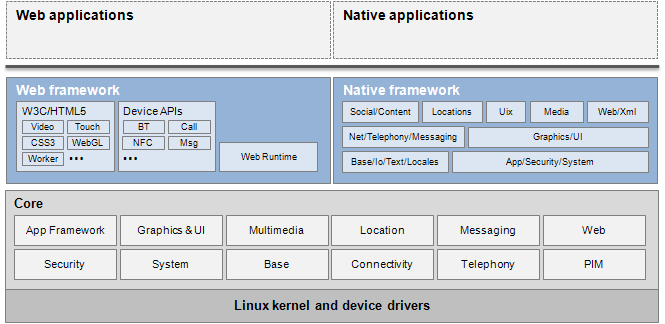
The current structure of the Tizen architecture can be seen in the figure above. It is based on the Linux kernel and device drivers. The main subsystem consists of open source libraries and a set of APIs for running the Web and native environments.
Versions and options of Tizen
Now you can most clearly see the development of Tizen for mobile devices. This is exactly the version of the operating system that is used for the Tizen SDK emulator and on Samsung devices for developers. In 2012, the Samsung RD-210 device was distributed, based on the Galaxy S2 HD hardware platform. Now the actual device is Samsung RD-PQ , based on the Galaxy S3. It has a Super AMOLED screen with a capacitive sensor and a resolution of 720x1280, an Exynos Quad chipset, including a 1.4 GHz Cortex A9 quad-core processor, two cameras (8 MP main and 1.9 MP front), a set of sensors, Bluetooth, NFC and t dd

Just recently, on July 22, a new version 2.2 of the operating system and development tools was released, which fixed bugs, added support for the “Menu” and “Back” hardware buttons, and made some changes to the interface and API.
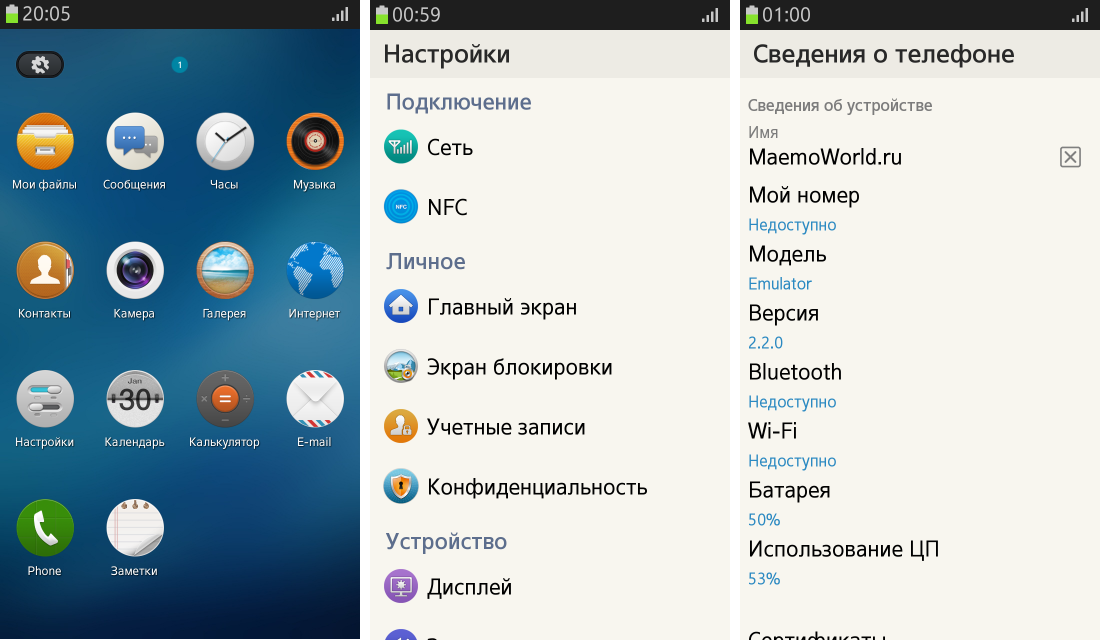
At the end of May , a Tizen developer conference was held , at which, among other things, the latest developments were presented. At this conference, Tizen version 3.0 was announced, which is planned to be released in 2014. This version is intended for PCs and laptops. The work of the technical sample of this version of the operating system (Tizen PC) using the GNOME 3 desktop was demonstrated on Intel ultrabooks.
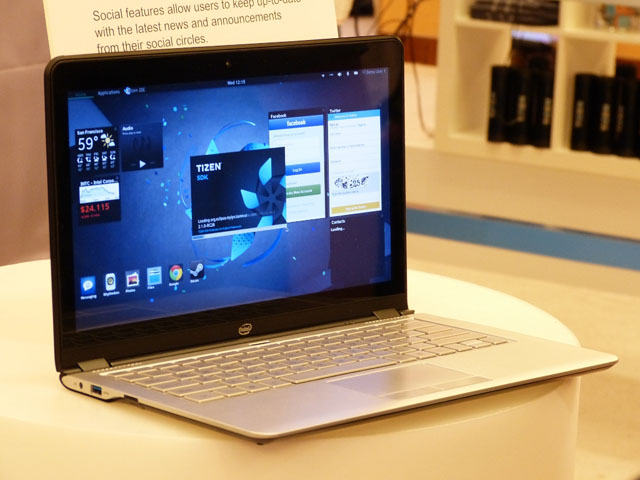
Another version of the Tizen that was presented at the conference is Tizen IVI (in-vehicle infortainment) for car infotainment systems. Compatible equipment was demonstrated on Land Rover.
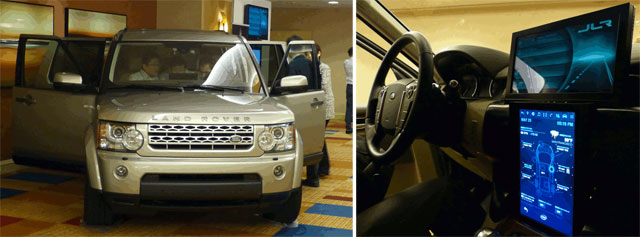
Tizen IVI was adopted as a standard by the GENVI alliance and was originally developed based on Tizen 2.0 for the x86 architecture (there is a way to install this version on computers with Intel processors). But a couple of weeks ago, a version was released based on the Tizen 3.0 code, which is planned to be used in further development. It is curious that Tizen IVI was interested not only by such companies as Jaguar and Toyota, but also by domestic KAMAZ .
In addition, the possibility is being considered of using Tizen-based software for completely different types of devices in the future: televisions, digital signal receivers, multimedia systems, and even home appliances.
Tizen Development
The main Tizen development tool is the Tizen SDK , which includes an Eclipse-based IDE, a set of tools ( Web-simulator , Emulator, Interface Designer, and others), a compiler, documentation, and sample applications. Tizen SDK builds are available for Ubuntu (x32 / x64), Windows XP and Windows 7 (x32 / x64), Apple Mac OS X 10.7 Lion and 10.8 Mountain Lion (x64). Also in the SDK, you can add a tool to transfer applications created for bada by connecting an additional repository .
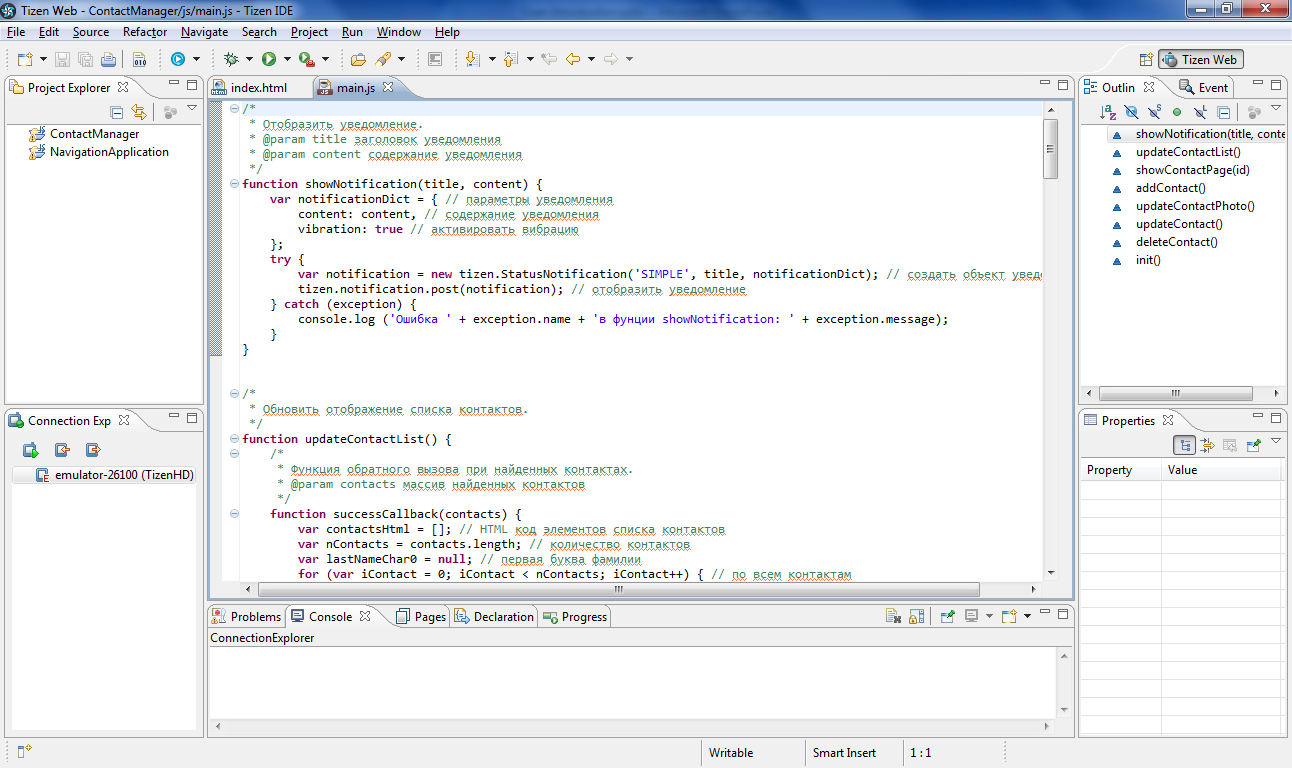
But there are other development tools that support Tizen. For example, Intel XDK , a cross-platform development tool using HTML5, and the Intel HTML5 App Porter Tool , which allows you to convert iOS software to HTML5 applications. You can design, prototype, and debug interfaces using Tizen UX Layouter & Composer . It is also important to note that the development of games for Tizen was supported by Havok ( Project Anarchy ), Unity Technologies ( Unity3D ), Marmalade ( PhoneGap ), Game Salad and YoYo Games, by adapting their engines and tools. And developers using the popular Qt toolkit should be interested in a fast-paced project designed to make Qt applications work on devices with Tizen .
Earn Money with Tizen
As it has become accepted now, Tizen has its own application store - Tizen Store, which was developed by Samsung. The corresponding program will be pre-installed on each device. The client part of the Tizen Store is not yet available, but the developers have already been given the opportunity to download applications in the seller office . This allows the former to occupy a relatively free niche for the application market. Tizen Store can host HTML5 applications, native and hybrid. In the future we plan to support other multimedia content. The key features of the store are the fast process of analyzing downloadable applications, which takes no more than three days, and the high share of the developer's profit from the sale of applications is 70%.

Also in the world there are contests and hackathons for Tizen developers. For example, on the 10th of July, the Tizen App Challenge began , the acceptance of which will end on the 1st of November. A distinctive feature of this competition are huge cash prizes - a total fund of more than $ 4 million! 54 winners will be selected in nine nominations (3 gaming and 6 non-gaming). In addition, developers of the top ten HTML5 apps will receive additional prizes. This is a great opportunity to get a valuable reward for your abilities, hurry to participate!

Tizen on the internet
The main resource with information about Tizen is Tizen.org , supported by the Linux Foundation. It consists of several sections:
- the main page contains general information, news and announcements of upcoming events,
- On the developer page, you can download the SDK, view the documentation and participate in forum discussions,
- The source code page is about developing the Tizen platform and porting it to devices.
In addition, there is a bugtracker and a section for wiki articles .
This concludes my introductory article, and I invite you to follow Tizen on Twitter and VKontakte .
Cyril Chuvilin,
Tizen Russian Community Manager, Intel Corporation
kirillx.v.chuvilin@intel.com
Source: https://habr.com/ru/post/187706/
All Articles